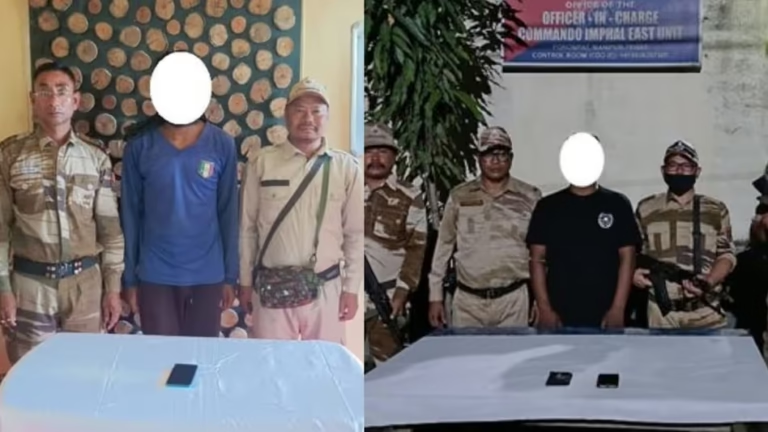Manipur Government Allocates ₹5 Crore for Aid to Internally Displaced Persons
Summary
The Manipur government has announced a significant allocation of ₹5 crore to assist internally displaced persons (IDPs) in the region. This financial aid aims to provide essential support and resources to those affected by recent unrest and displacement. The initiative underscores the government’s commitment to addressing the needs of vulnerable populations and facilitating their return to normalcy.
Full Article: Addressing the Crisis – Manipur’s Support for Internally Displaced Persons
Introduction: Understanding the Context of Displacement
Displacement is a heartbreaking reality for many, especially in regions like Manipur, where conflict and unrest can disrupt lives overnight. In a proactive step to address the plight of internally displaced persons (IDPs), the Manipur government has taken a decisive measure by allocating ₹5 crore for their aid. But what does this mean for the affected individuals and the community as a whole? Let’s dive deep into the implications of this financial aid, the conditions leading to displacement, and the government’s role in facilitating recovery.
The Need for Aid: Why Internally Displaced Persons Matter
1. The Human Cost of Conflict
The impact of conflict on communities is often profound and long-lasting. Families torn apart, homes destroyed, and livelihoods disrupted paint a grim picture of displacement. In Manipur, recent tensions have led to a significant number of individuals seeking refuge, often in makeshift shelters or with relatives. This allocation aims to mitigate some of these harsh realities.
2. Addressing Basic Needs
For many IDPs, the immediate concerns revolve around basic necessities: food, shelter, and healthcare. The ₹5 crore allocation is not just a financial gesture; it’s a lifeline that can help provide essential supplies and services. Whether it’s through direct assistance or funding local NGOs, this financial support is crucial for ensuring that IDPs can access what they need to survive and start rebuilding their lives.
What Will the Aid Provide?
1. Immediate Relief Efforts
The government’s allocation will focus on immediate relief efforts. This can include food supplies, hygiene kits, and medical assistance. It’s a fundamental step toward ensuring that IDPs don’t suffer the consequences of neglect during a critical time.
2. Long-Term Recovery Programs
While immediate relief is essential, long-term recovery is equally important. The allocation might also facilitate educational programs, vocational training, and psychological support for those traumatized by conflict. By investing in their futures, the government can help individuals rebuild not just their lives, but also their communities.
Community Involvement: The Role of Local Organizations
1. Collaboration with NGOs
Local non-governmental organizations (NGOs) play a vital role in crisis management. The government’s financial aid can be channeled through these organizations to ensure that assistance reaches those who need it most. NGOs often have established networks and understand the unique needs of displaced individuals, making them invaluable partners in this initiative.
2. Grassroots Movements and Awareness
Beyond financial aid, community awareness is crucial. Engaging the local population in support efforts can create a more robust safety net for IDPs. Grassroots movements can foster empathy and understanding, encouraging residents to lend a hand, whether through donations, volunteer work, or simply spreading the word about the situation.
Challenges Ahead: Navigating the Complexity of Displacement
1. Political and Social Dynamics
Displacement often stems from deep-rooted political and social issues. As the government allocates funds for relief, it must also address the underlying causes of conflict. Without tackling these issues, aid might only provide temporary relief rather than a sustainable solution.
2. Ensuring Effective Distribution
One of the biggest challenges in any aid effort is ensuring that resources are distributed effectively. Corruption, bureaucratic delays, and logistical issues can impede progress. The government must implement strict oversight mechanisms to ensure that the ₹5 crore reaches those in need promptly and efficiently.
The Bigger Picture: Government Responsibility and Accountability
1. Building Trust with the Community
For the government, this allocation represents an opportunity to build trust with the affected communities. Transparency in how funds are used and clear communication about what the aid entails will be critical in fostering a positive relationship with IDPs and the broader population.
2. Future Allocations and Planning
This ₹5 crore allocation is just the beginning. The government should consider establishing a more permanent fund for ongoing support for IDPs. Continuous assessments of the situation will help identify further needs and adjustments to aid strategies, ensuring that assistance evolves with the circumstances.
Conclusion: A Step Toward Healing
The Manipur government’s allocation of ₹5 crore for internally displaced persons marks a critical step in addressing a complex humanitarian issue. While this financial aid provides immediate relief, it’s also a reminder of the ongoing challenges faced by communities in conflict. As the government and local organizations work together, the hope is not only to support those displaced but to foster resilience and rebuild a more harmonious society.
FAQs
- What are the primary needs of internally displaced persons?
The main needs include food, shelter, healthcare, and psychological support. - How will the ₹5 crore be used?
The allocation will provide immediate relief supplies and support long-term recovery programs. - What role do NGOs play in this initiative?
NGOs help distribute aid effectively and understand the unique needs of the affected individuals. - What challenges might arise from this aid allocation?
Challenges include potential corruption, bureaucratic delays, and addressing underlying political issues. - How can the community support displaced individuals?
Community members can volunteer, donate, and raise awareness about the needs of IDPs.


